How to protect trees from winter weather – including heavy snow, frost, and wind
Inclement weather can damage trees and make them a safety hazard, so here's how to be prepared

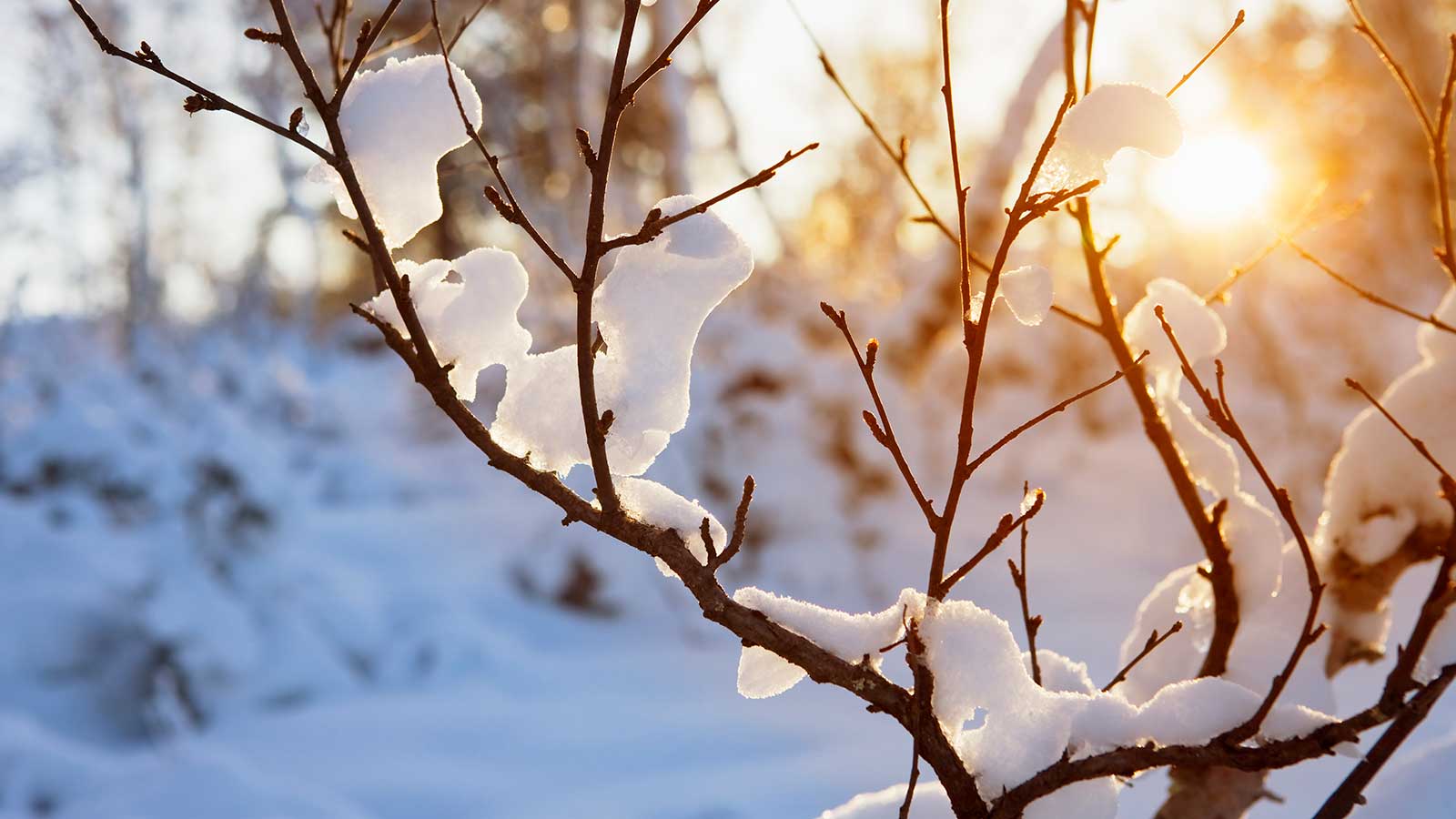
The colder months aren't just tough on our backyard lawns and plants. Snow, frost, wind, and ice can put a strain on our trees, too.
Small backyard trees, young trees, and potted trees can be particularly susceptible to winter injuries. These include frost cracks, sunscald, branch breakages, salt damage, root heaving, and dieback, lists Fern Berg, a tree expert from Tree Vitalize.
So, if you want to keep your trees healthy all the way through to spring and beyond, putting some protective measures in place may be in order.

Fern is the founder of Tree Vitalize and has planted and currently cares for over 100 different native and exotic fruit, nut, and ornamental trees. She also cultivates an extensive vegetable garden and several flower gardens and cares for an ever-growing happy family of indoor plants. Fern has a special interest in biodynamic farming, food production, and closed-loop agriculture and is currently in the process of becoming an IARC-certified horticulturist.
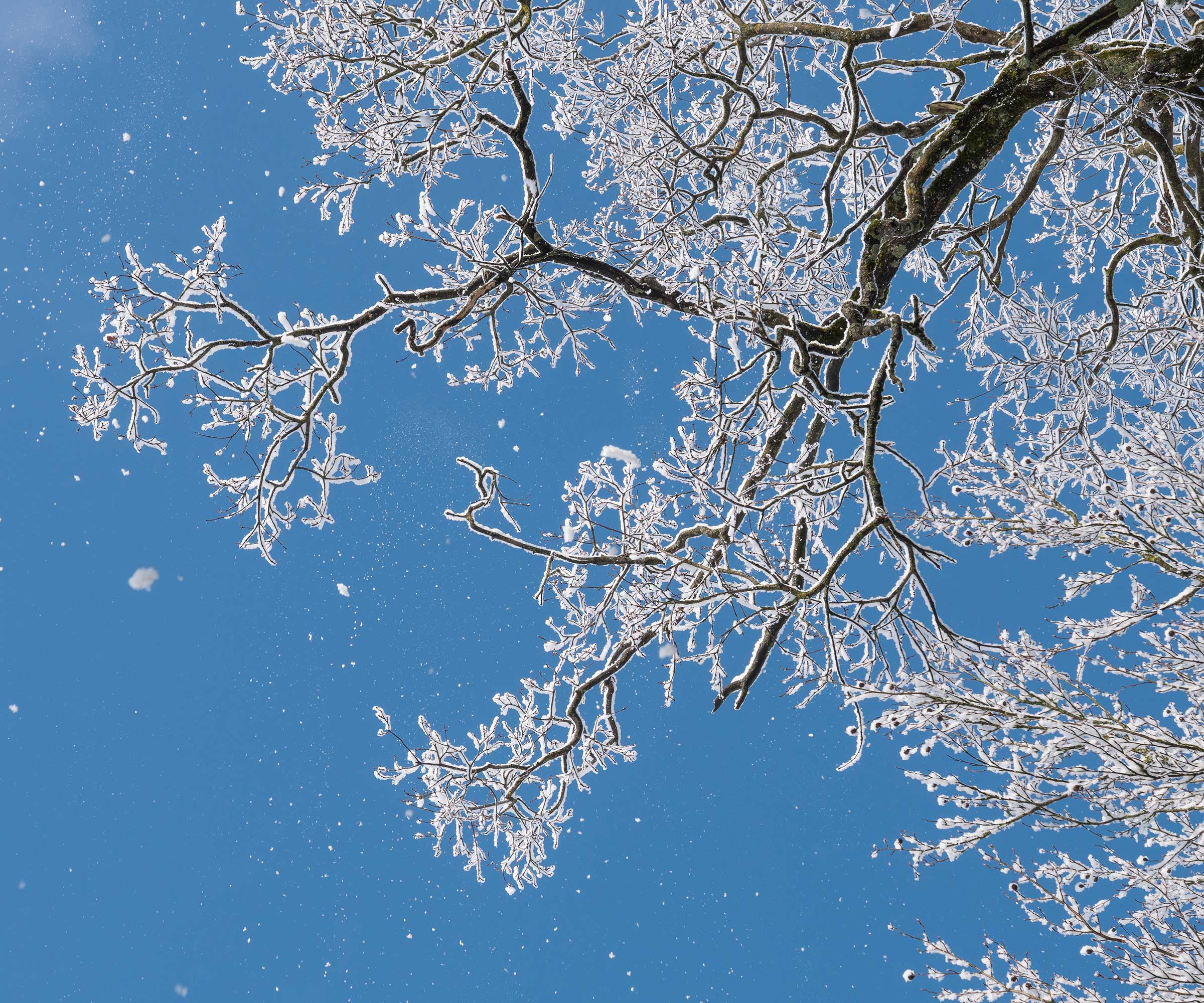
Heavy snow can cause branches to break
6 ways to protect your trees this winter
Whether your have recently planted a tree or have a few well-established specimens in your plot, these expert tips can help them make it through wintry weather.
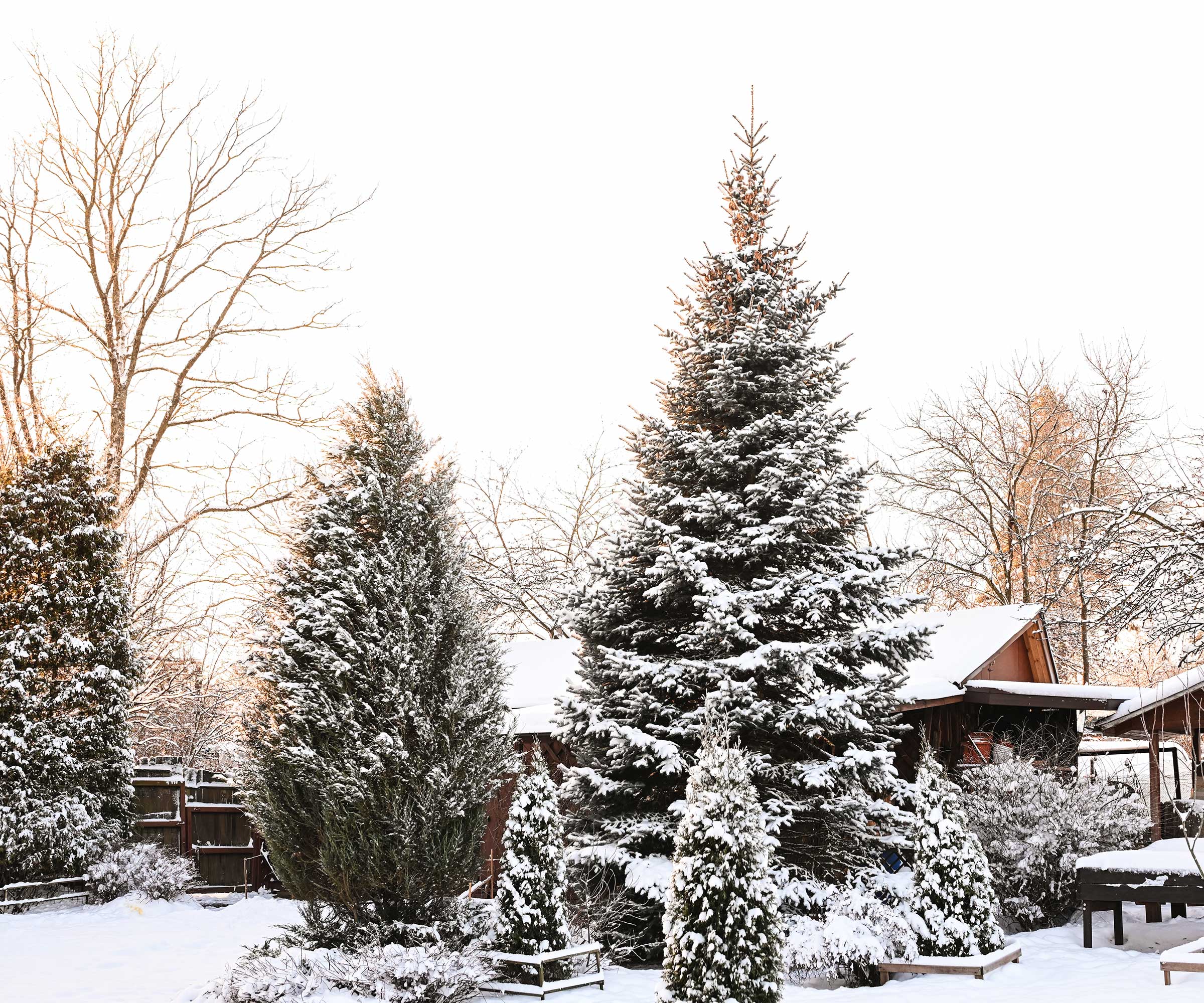
Inclement weather can damage your backyard trees
1. Inspect your trees before winter weather arrives
'The first step is to inspect your trees and make sure they are healthy,' advises Mallory Micetich, a home expert from Angi. This can be done as part of your fall tree care routine.
She suggests keeping an eye out for decay – such as fungus growing on the trunk – as well as an excess of bare branches. 'If you think your tree may be dying, bring in a pro to remove it safely, before winter storms start to hit your area.'
Even if the majority of your tree is still healthy, a trained arborist can check for and remove any risky branches that could damage your home during high winds. 'It’s also a good idea to remove any low branches that could be weighed down by the snow,' Mallory adds.
Design expertise in your inbox – from inspiring decorating ideas and beautiful celebrity homes to practical gardening advice and shopping round-ups.

Mallory Micetich is a home expert at Angi, with particular expertise in small-home living, sustainability, and consumer protection. While currently renting in Austin, TX, she has been a homeowner, investor, landlord and renter over the last decade. She is committed to minimizing her environmental footprint and to small-home living, having lived in only properties of 1,200 square feet or less.

Check for signs of disease and decay
2. Ensure they're hydrated
'Before the ground freezes over, give your trees a good soak right out to the drip line (the edge of the tree’s canopy),' recommends Fern Berg. 'This will help keep your trees hydrated and better able to deal with winter stresses.'
While watering your trees, Fern advises paying attention to what the water is doing. 'Is it being absorbed easily into the soil surrounding your tree? Or, is it running off into surrounding areas, or pooling?
'If the water is not readily absorbed, the soil may have become compacted,' she explains. 'This is a good time to gently aerate the soil around your trees, either with a hand aerator or a garden fork.'
Starting three feet away from the trunk, work your way around the tree while pushing the fork into the top 2-4 inches of soil, she says. Give it a gentle wiggle as you do so, to open up the soil. 'This will ensure any water you do provide your tree will penetrate the soil and be accessible to the tree's roots.' Avoid any large roots as you go, she adds.
Fern recommends following this up with a good layer of mulch around the base of your tree – about 2-4 inches thick. 'Suitable options include wood chips, straw, hay, or even fallen leaves. Mulching will help maintain soil moisture, suppress weeds, and insulate against temperature extremes.
'Just make sure you don’t mulch right up to the trunk of the tree as this can cause root rot and other fungal issues. Instead, leave 3-6 inches closest to the trunk bare of mulch and ideally mulch right to the drip line.'
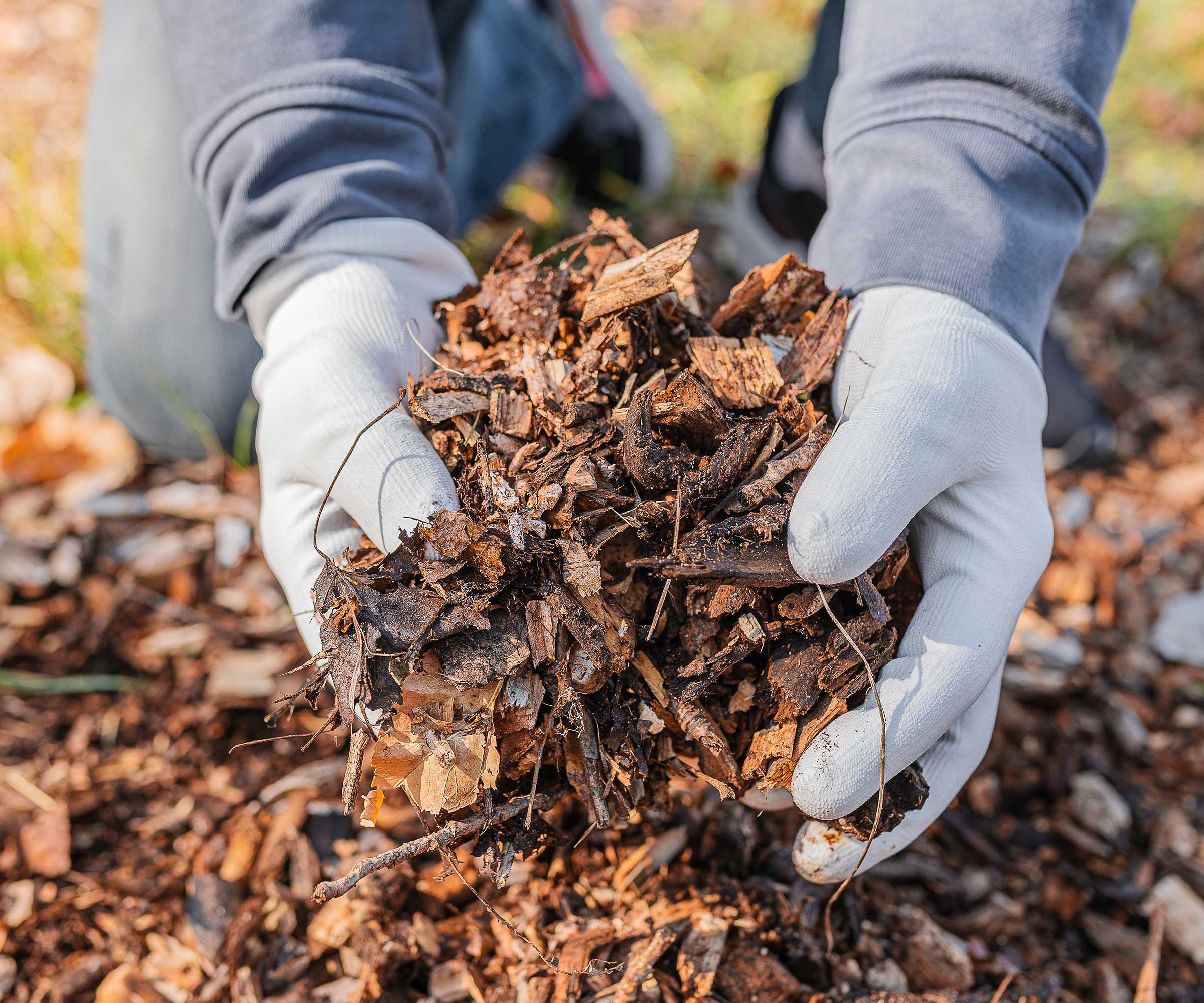
Mulching will help to insulate your trees' roots
3. Protect your trees from snow damage
Heavy snow and ice can cause branches to break. Certain species that are more prone to this include white pines, Bradford pears, poplars, some varieties of arborvitae and multi-stem birches such as river birches, lists arborist Chris Kemp of Piscataqua Landscaping and Tree Service.
There are, however, ways to minimize the risks, he explains. One approach for some trees (such as birches and arborvitae) is to secure multiple stems together. Selective pruning can also help. Multi-stem river birches, for example, can be pruned to reduce the length of their limbs. This makes the trees slightly more compact and less likely to catch snow on their branches.
You can also install a protective structure. Fern suggests using a wooden A-frame over the top of the tree, for instance. 'You can also loosely wrap young trees with burlap, all the way around the tree,' she continues. Even better, create a frame first using three strong stakes arranged in a triangle formation, then wrap the burlap around the frame, securing it well. 'The idea is to create a cone shape that will shed snow much easier.'
You can shop burlap from Amazon at an affordable price.
'After-snow care is just as important as pre-snow prep,' says Mallory Micetich. 'You can gently brush away any snow from the tree branches, but don’t attempt to remove ice from your tree. It’s safer to just let it melt when the weather warms up.'

Chris has been involved in tree care for over 30 years. He is a Certified Arborist in New Hampshire, a Licensed Arborist in Maine, is certified by the International Society of Arboriculture, and has a Tree Risk Assessment Qualification. He has a Master's degree in Urban Forestry and Bachelor's degrees in Horticulture and Economics. He is a member of the Tree Care Industry Association, the American Society of Consulting Arborists and the Maine and New Hampshire Arborist Associations.
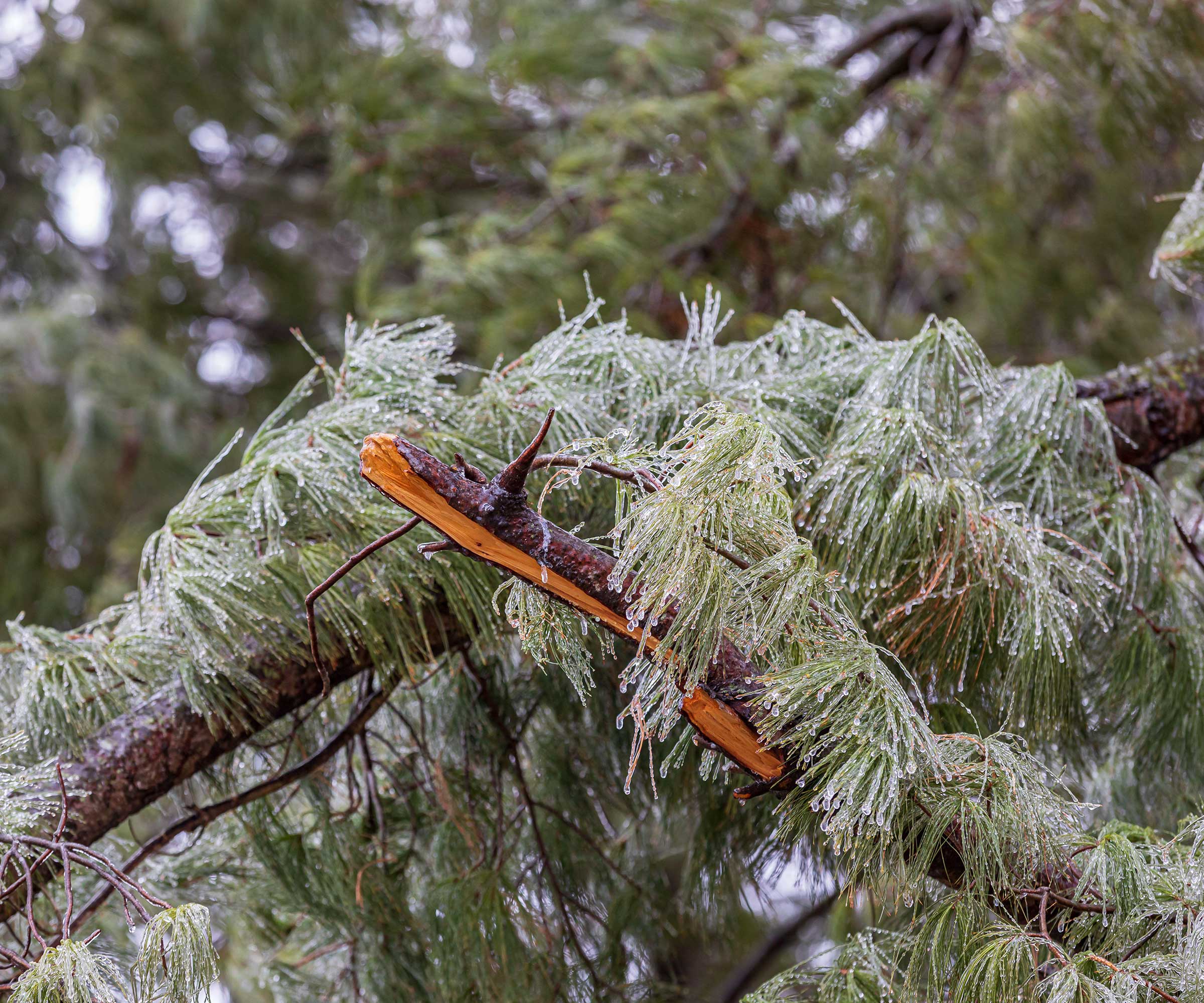
You can put protective measures in place to help your trees withstand heavy snow and ice
4. Consider wrapping the trunks
'Young trees and those with thin bark such as maples and lindens are susceptible to sunscald and frost cracks,' says Fern Berg. 'You can help protect the vulnerable bark by snugly wrapping it with a commercial tree wrap or burlap – just make sure it is not too tight.
Winter weather also means there is less available food for hungry animals such as rabbits, deer and rodents,' Fern adds. 'These critters may resort to nibbling on the tender bark and leaves of young trees, so fencing off your tree to protect against foraging wildlife is also a consideration when preparing your trees for winter.'
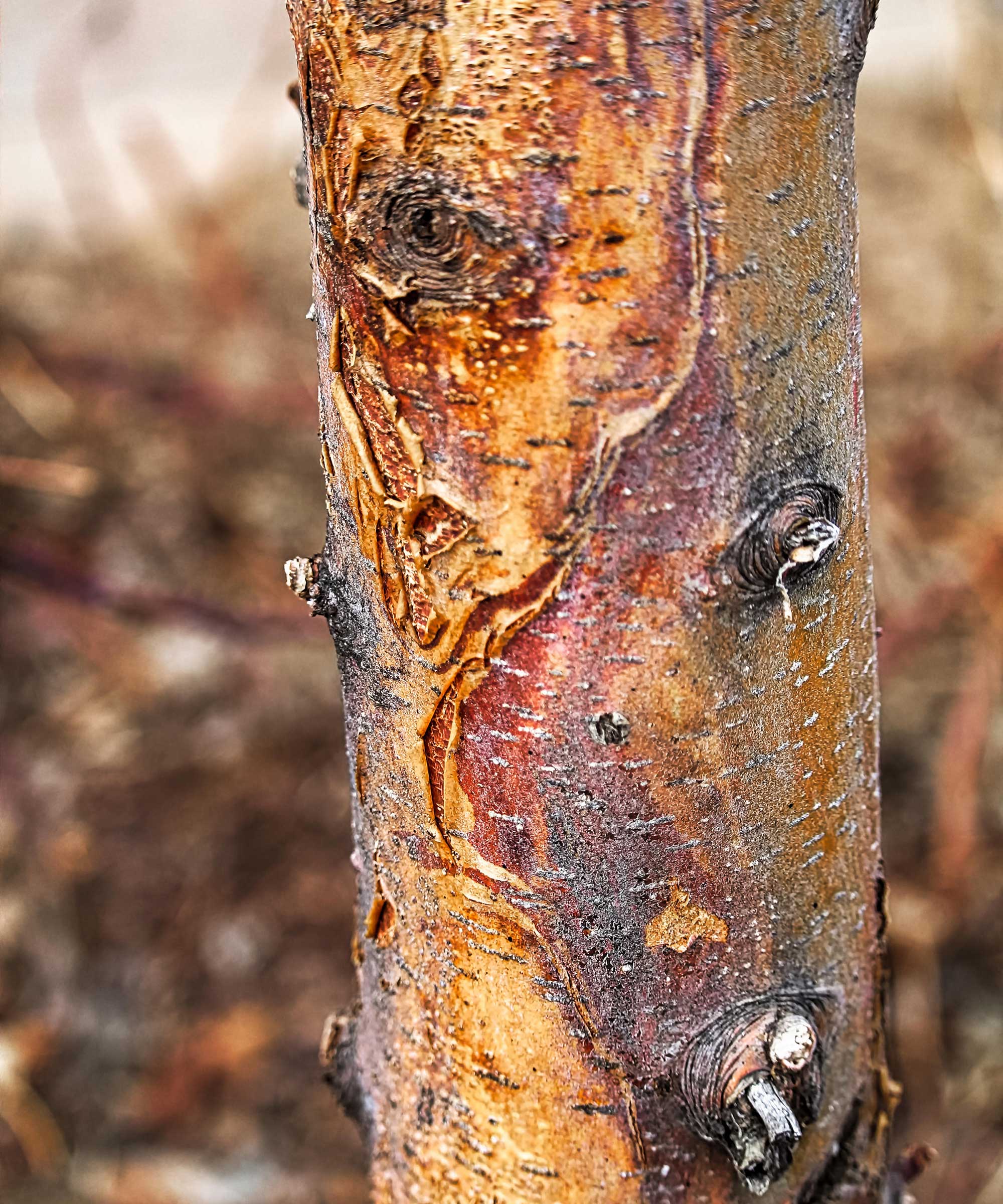
Sunscald causes permanent damage to trees
5. Deter wind with a screen
'Certain trees are susceptible to desiccation, which is the excessive loss of moisture from plant tissues,' says Fern. These include young and newly planted trees, conifers, and broadleaf evergreens such as hollies, laurels, and magnolias. 'This often occurs in winter due to frozen soil, low humidity, and wind exposure, and can lead to wilting and leaf browning.'
Providing a windbreak can help prevent desiccation, she says. 'You can do this with burlap or snow fencing – just make sure they are firmly secured to withstand storms and persistent winds.'
Top tip: You can also install a burlap barrier to protect any trees planted near roads or driveways against salt-spray damage. 'Salt damage may become a problem during winter when road salts are used to de-ice the road,' Fern explains. However, it is best to consider this prior to planting, and choose salt-tolerant species for areas where salt application may occur, she says. 'If you are de-icing your own driveway, choose less harmful options such as sand or calcium magnesium acetate.'

Take caution when de-icing areas around your tree
6. Protect potted trees
Potted trees are a great way to add patio privacy as well as beauty to a backyard. However, planters don't provide as much insulation as the ground, so extra precautions often need to be taken to help them survive the winter cold.
You may need to move them into a more sheltered position for winter, as Fern highlights. 'Choose a location that matches the trees' ideal growing conditions as closely as possible and transition to the new location gradually,' she says.
If you can't move them somewhere more suitable, such as a greenhouse, move them closer together, next to a sheltered wall of your home. You can also wrap the pots in burlap, frost cloth (available at Amazon), or bubble wrap, and mulch the tops of the soil. Alternatively, you can sink the pots into the ground until the weather warms again.
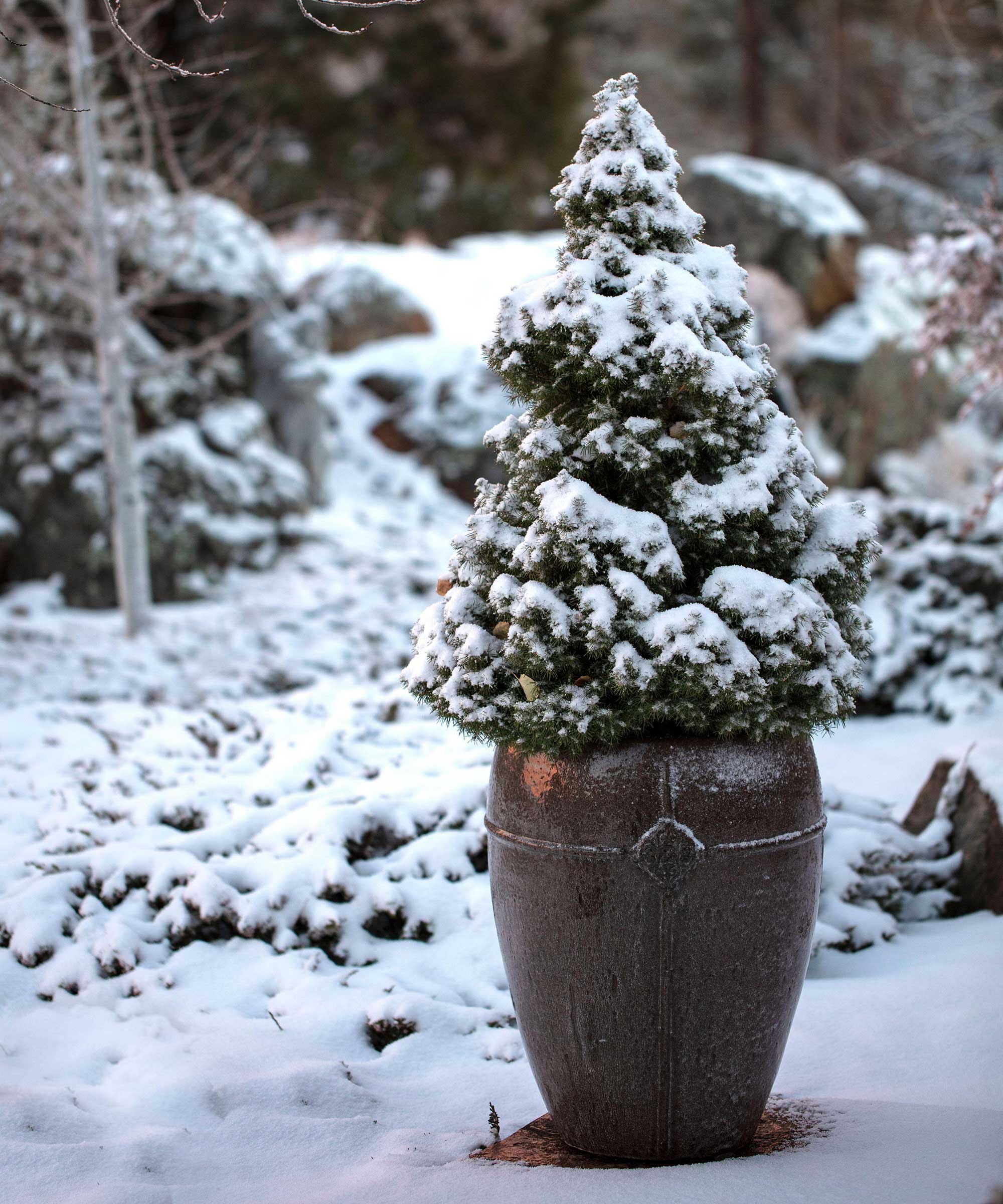
Potted trees often need additional care to withstand the winter months
FAQs
Should you prune trees to prepare them for winter?
'In most cases, it is best to avoid pruning your trees right before winter as this may increase the risk of disease or injury during the cold months,' says Fern Berg of Tree Vitalize.
'The exception to this rule is if you notice any dead or damaged branches. It is best to remove these regardless of the time of year, as they can become a safety hazard.'
How should you protect newly-planted trees in winter?
'Newly planted trees require more care in the winter months than their more established counterparts,' says Mallory Micetich of Angi. 'I recommend filling any gaps in the soil around the base of new trees, adding some extra mulch, and wrapping the trunks with tree wrap to protect them from the cold temperatures.
'It’s also a good idea to cover smaller trees with some type of tarp or burlap blanket,' she adds.
Which trees are more vulnerable to winter weather?
'Some tree varieties, like citrus trees, palm trees, and several types of fruit trees, don’t do well in the winter months,' says Mallory Micetich of Angi. 'If possible, bring these trees inside to protect them from the elements. If you live in a colder climate, consider planting hardwood trees like oak and maple.'
Before you start wrapping, mulching, and covering every tree in sight, it's worth remembering that not all species will react the same to inclement weather, as Chris points out. Hardy native trees are often less vulnerable to such conditions.
Consulting a certified arborist is a great way to better understand your plants' needs and what you can do to help them handle the winter, he says.

Holly started writing about gardening five years ago, and she is a regular contributor to Homes & Gardens. She has also written many gardening features for Woman & Home and Real Homes, too. She has previous experience as a professional gardener, where she helped to plant and maintain private gardens. Holly has also looked after allotment plots over the years and loves to grow her own flowers and veggies from seed. In her spare time, she enjoys visiting local gardens, botanical drawing, and tending to her ever-growing collection of houseplants.